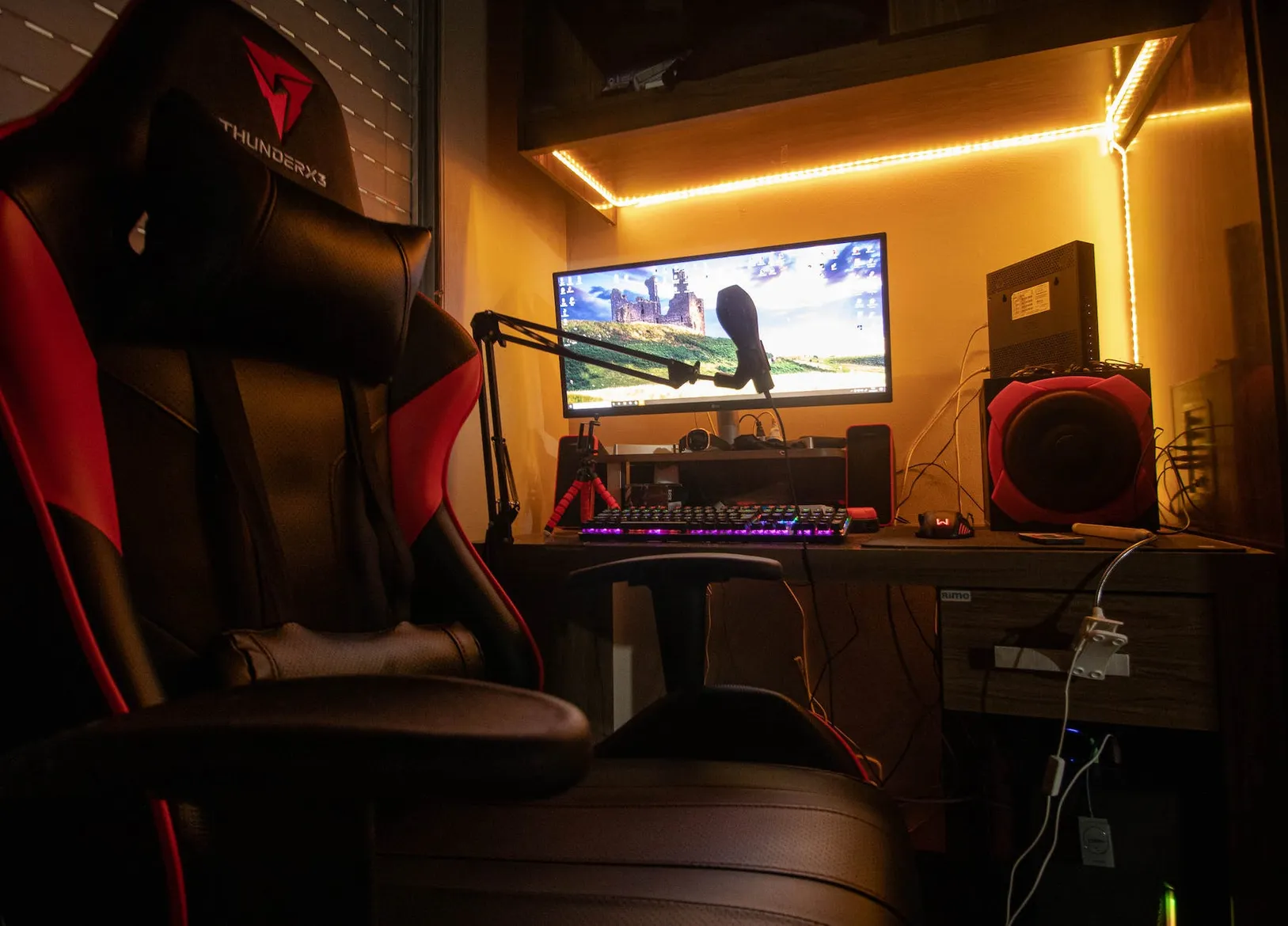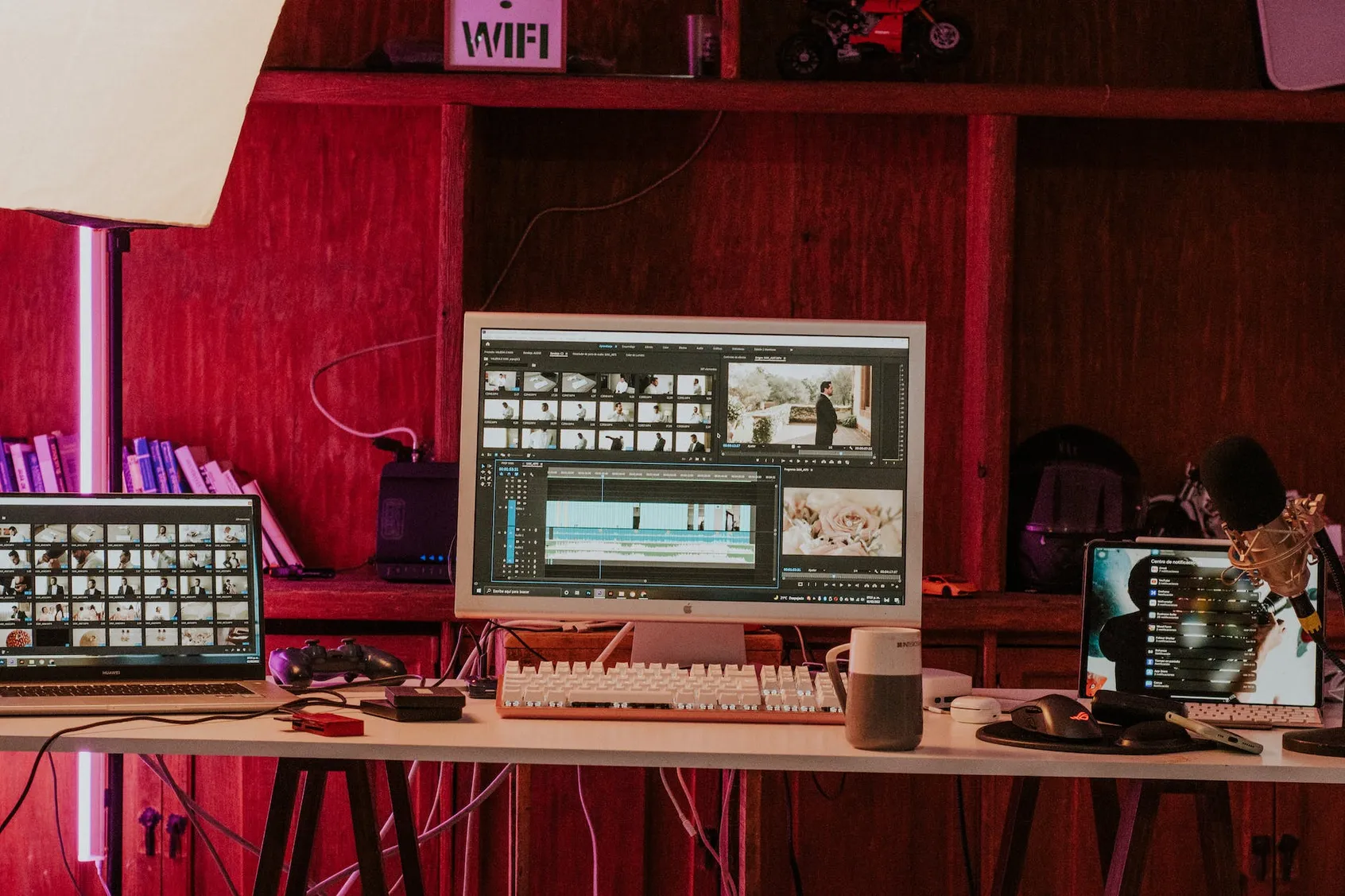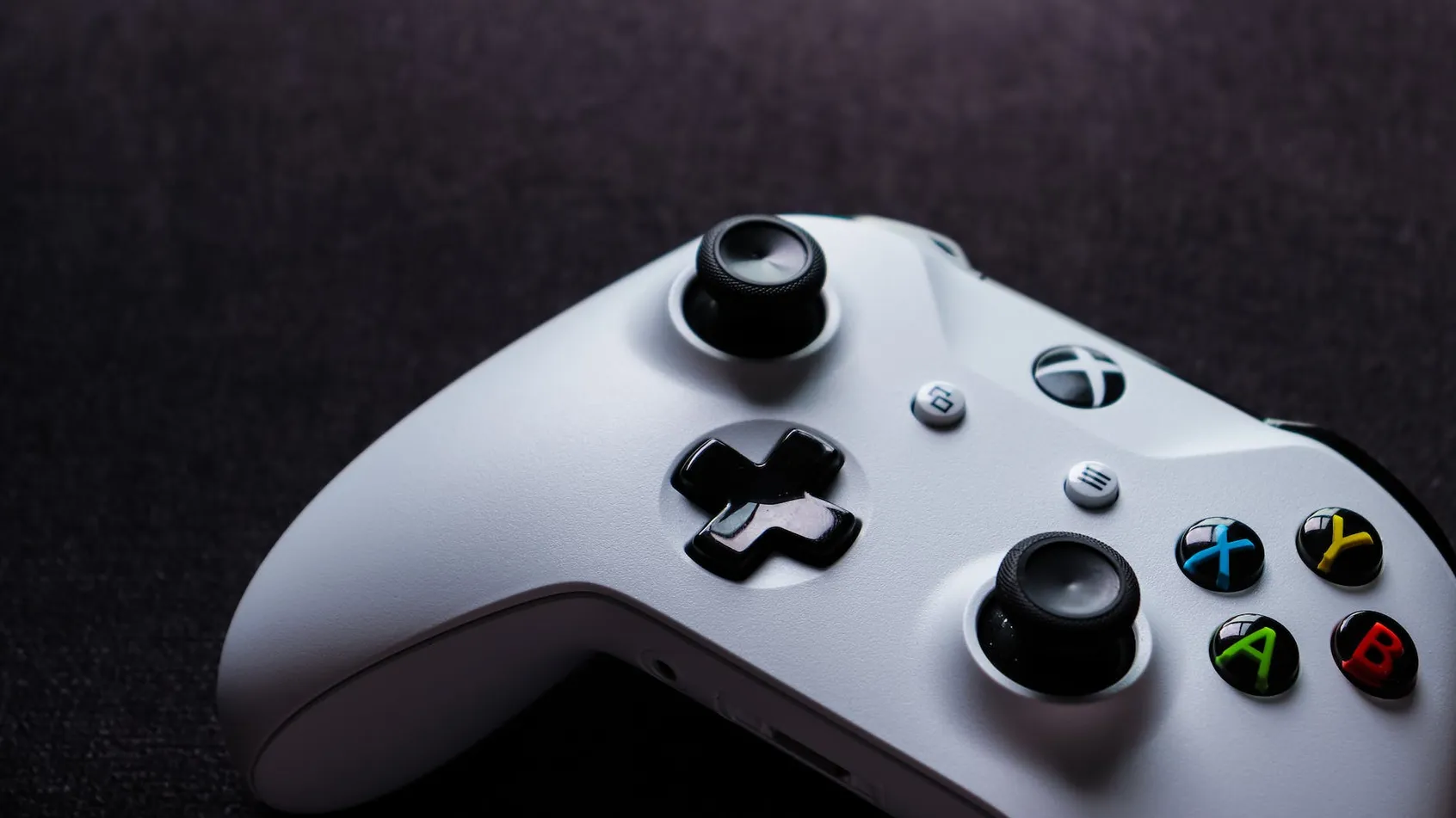Are gaming monitors good for video editing? Yes, gaming monitors are a great option for video editing. With their fast refresh rates, large screens, and high resolutions, gaming monitors can provide the perfect environment for creating and editing high-quality videos.
Gaming monitors provide a smooth, responsive experience essential for any video editor. Additionally, gaming monitors are more affordable than other professional-grade monitors, making them a great choice for hobbyists and professionals.
Are Gaming Monitors Good For Video Editing?
With the ever-increasing popularity of gaming and e-sports, the demand for gaming monitors has grown exponentially. With this in mind, it is understandable that many people are curious whether gaming monitors are suitable for video editing.
Gaming monitors are capable of providing high levels of color accuracy, contrast, and clarity, as well as a quick response time. This makes them ideal for editing video, as they can accurately display the various colors and tones of the video footage.
Additionally, gaming monitors are often equipped with features that make them more suitable for video editing than traditional monitors. These features include a wide color gamut and a low input lag.
However, it is important to note that not all gaming monitors are equally suitable for video editing. Some gaming monitors are better suited to gaming than video editing. For example, some gaming monitors focus more on features such as refresh rate and response time, which are important for gaming, but not necessarily for video editing.
Therefore, it is important to research and select a gaming monitor with the most suitable features for your video editing needs.

What Are The Benefits Of Using A Gaming Monitor For Video Editing?
While gaming monitors are designed primarily for gaming, they can also provide many benefits for video editing. Here are a few reasons why investing in a gaming monitor for video editing can be a good idea:
- High refresh rates: Gaming monitors typically have refresh rates of 120Hz or higher, which can help reduce motion blur and make your video editing experience smoother and more efficient.
- Low input lag: Gaming monitors are designed to minimize input lag, which can help improve the responsiveness of your video editing software and reduce the time it takes to complete tasks.
- Color accuracy: Many modern gaming monitors offer excellent color accuracy and gamma correction, which can help ensure your video edits look as accurate and true-to-life as possible.
- Large screen sizes: Gaming monitors are available in many sizes, making it easier to work with multiple windows and increasing productivity.
- Eye-care features: Many gaming monitors have features like blue-light filters and flicker-free technology, which can help reduce eye strain and fatigue during long editing sessions.
Investing in a gaming monitor for video editing can greatly improve your productivity, accuracy, and comfort while working on your projects.
How To Choose The Right Gaming Monitor For Video Editing?
When choosing a monitor for video editing, a gaming monitor is a great option. With their large displays, high refresh rates, and fast response times, gaming monitors are designed to provide an immersive gaming experience. However, they can also be used for video editing as well. There are a few things to consider to choose the right gaming monitor for video editing.
- Monitor: Gaming monitors come in various sizes, from smaller 24” monitors to massive 34” models. Choosing a monitor that’s large enough to display the footage and editing tools comfortably is important for video editing.
- Resolution: Gaming monitors are typically available in Full HD (1920×1080) and Quad HD (2560×1440) resolutions. Choosing a high enough resolution monitor to accurately display the footage and editing tools is important for video editing.
- Refresh Rate: Refresh rates are measured in Hertz (Hz). Gaming monitors typically have refresh rates of up to 240Hz, which is ideal for gaming but may be overkill for video editing. A refresh rate of 60Hz is usually sufficient for video editing.
- Response Time: Response time is measured in milliseconds (ms). Gaming monitors typically have response times of up to 1sss, which is ideal for gaming but may be too fast for video editing. A response time of 5ms or more is typically sufficient for video editing.
What Features Should You Consider When Buying A Gaming Monitor For Video Editing?
When buying a gaming monitor for video editing, the following features are important to consider:
- Resolution: A high-resolution monitor will allow you to see your video content in greater detail. A 4K resolution is recommended for video editing.
- Color accuracy: A monitor with a wide color gamut and accurate color reproduction is crucial for video editing.
- Refresh rate: A higher refresh rate will result in smoother movement on the screen, which is important for video editing.
- Contrast ratio: A higher contrast ratio will help distinguish between the video’s darker and lighter areas.
- Size: A larger monitor will allow you to see your video content more clearly and in detail.
- Connectivity: A monitor with multiple connection ports such as HDMI or DisplayPort can improve flexibility in connecting to other devices.
Overall, video editing is important for a high-quality gaming monitor with a 4K resolution, accurate color reproduction, high refresh rate, contrast ratio, size, and connectivity.

Do Higher-End Gaming Monitors Offer Better Video Editing Performance?
Higher-end gaming monitors can offer better video editing performance, but it comes down to the specific features and specifications of the monitor. Many gaming monitors are designed with features like high refresh rates and low input lag, which can also benefit video editing.
However, color accuracy and resolution are also important factors for video editing. Hence, looking for a monitor with a wide color gamut, high resolution, and good contrast ratios is best. It’s also important to consider the size and aspect ratio of the monitor, as well as its connectivity options and overall build quality, as these factors can also impact your editing experience.
Ultimately, the best monitor for video editing will depend on your needs, budget, and personal preferences.
What Are The Advantages Of Using A Gaming Monitor Over A Standard Monitor For Video Editing?
Using a gaming monitor for video editing may seem unusual, but doing so has several advantages. Here are a few:
- Faster Refresh Rates: Gaming monitors generally have faster refresh rates than standard monitors, which means the image on the screen updates more quickly. This can be especially useful for video editing, as you’ll be able to see changes in the video more quickly.
- Color Accuracy: Many gaming monitors are designed to display highly accurate colors, which is an important consideration for video editing. You’ll need to be able to see the colors in your videos as accurately as possible, and a gaming monitor can help you do that.
- High Resolution: Many gaming monitors have high resolutions, which means you’ll be able to see more detail in your videos. This can be especially useful for high-resolution footage, such as 4K or 8K video.
- Customizable Settings: Gaming monitors often have a variety of customizable settings, such as the ability to adjust the brightness and contrast or to switch between different color profiles. This can be useful for fine-tuning the display to your specific needs.
Using a gaming monitor for video editing can help you work more efficiently and get better results from your editing work. While a standard monitor can work for video editing, a gaming monitor may offer some advantages.
What Are The Disadvantages Of Using A Gaming Monitor For Video Editing?
While gaming monitors may have some attractive features, such as high refresh rates and low input lag, there may be better choices for video editing. Here are some disadvantages to consider:
- Color Accuracy: Gaming monitors prioritize speed over color accuracy, which can be a problem for video editors who need an accurate representation of colors. This can lead to inaccurate color grading and calibration, which can impact the overall look and feel of the video.
- Screen Size: Gaming monitors often have smaller screens than professional editing monitors. This is a potential issue when editing videos, as it can limit your ability to see the finer details.
- Limited Viewing Angles: Some gaming monitors have limited viewing angles, meaning the colors and contrast can shift when viewed from different angles. This can make it difficult to accurately represent how the video will look on different devices.
- Price: Gaming monitors can be expensive, and while they may have some beneficial features for video editing, they may not be worth the investment if you are looking for a professional, color-accurate display. It’s important to consider your budget when choosing a monitor for video editing.

What Are The Different Types Of Connectivity Options For Gaming Monitors?
Gaming monitors are becoming increasingly popular for video editing due to their high-resolution display and fast refresh rates. They offer a wide range of connectivity options, allowing various devices and peripherals to be used for video editing.
- DisplayPort: One of the most common connectivity options for gaming monitors is DisplayPort. This allows for a high refresh rate and resolution, making it ideal for video editing. It also offers low latency, allowing smooth and fast real-time video editing. Additionally, it supports digital audio, making it a great option for those looking to edit audio.
- HDMI: This type of connection can support high-definition video and audio, making it perfect for those who need to edit in HD. It also offers low latency, making it a great option for real-time video editing.
- USB-C: This type of connection can transfer data at high speeds, making it a great option for those who need to transfer large files. Additionally, it can be used to connect other peripherals, such as a mouse or keyboard.
- DVI: This is another connectivity option found on gaming monitors. This type of connection offers a high resolution and fast refresh rate, making it perfect for video editing. Additionally, it supports digital audio, making it a great option for those looking to edit audio.
In conclusion, gaming monitors are a great option for video editing due to their high-resolution display and fast refresh rate. Additionally, they offer a wide range of connectivity options, allowing for a wide range of devices and peripherals to be used for video editing. This makes them the ideal choice for those looking for a high-performance monitor for video editing.
How To Set Up Your Gaming Monitor For Video Editing?
When it comes to setting up your gaming monitor for video editing, there are several things you need to consider to ensure the best visual output. Here are some tips to help you set up your gaming monitor for video editing:
- Use a high-resolution monitor: A high-resolution monitor is essential, preferably with a 4K resolution, as it provides better image quality and makes it easier to edit videos.
- Calibrate your monitor: Calibrating your monitor ensures that the colors appear accurate, which is crucial for ensuring consistent and accurate video edits. Utilizing calibration tools or software for your monitor can help in this regard.
- Adjust brightness and contrast: For video editing, adjusting the brightness and contrast of your monitor is very important. Ensure your monitor is not too bright, as it might cause eye strain, and avoid high contrast, which could affect color accuracy.
- Use a color grading tool: You can use a color grading tool to color correct and enhance your video footage and images. Software like Adobe Premiere Pro or Final Cut Pro has built-in color grading tools that can help you enhance the colors of your video content.
- Consider investing in a second monitor: It can be helpful when editing videos, as it provides additional viewing space and allows you to view your content in full-screen mode. While a second monitor isn’t strictly essential, it can significantly improve your workflow and productivity.
Overall, setting up your gaming monitor for video editing requires careful attention to detail and consideration of different factors. By following these tips, you can ensure that your video projects look their best, and you can take your video editing skills to the next level.
Is A Gaming Monitor Necessary For Professional Video Editing?
No, a gaming monitor is not necessarily required for professional video editing. While gaming monitors typically feature high refresh rates and fast response times, these features are optional for video editing.
Instead, video editors should focus on finding a high-resolution and color accuracy monitor, as these factors are more important for accurately editing and color grading footage. Additionally, it may be beneficial to find a monitor with a larger screen size, as this will allow for better detail and easier multitasking.
Ultimately, choosing a monitor that suits your specific needs and budget is important, regardless of whether it’s marketed as a gaming monitor.
Which Monitor For Video Editing And Gaming?
When it comes to finding a monitor for both video editing and gaming, there are a few things you want to consider.
First, look for a monitor with a high-resolution display, preferably 4K, as this will give you crisp and clear visuals for gaming and video editing. You also want to find a monitor with a quick response time and a high refresh rate to avoid lag or stuttering during fast-paced gaming.
Some popular options for a dual-purpose monitor include the Dell U2718Q or the LG 27GL850-B. Both monitors offer 4K resolution, fast response times, and a high refresh rate, making them ideal for video editing and gaming.
Ultimately, it comes down to personal preference and budget, but these are great starting points.
Best Monitor For Video Editing
When it comes to finding the best monitor for video editing, there are a few important things to consider.
One of the most important considerations is screen size. Video editing requires much fine detail, so a larger screen is ideal. Many video editors opt for a 27-inch monitor for this reason.
Another factor to consider is the monitor’s resolution. A higher-resolution monitor is preferable for video editing, allowing for better color accuracy and higher-resolution footage. Gaming monitors can be a great choice for video editing, as they often have high resolutions and fast response times. This makes them ideal for working with high-quality video footage.
However, there may be better choices for color-critical work, as they are often optimized for gaming and not necessarily for color accuracy. Considering the monitor’s purpose before investing in a gaming monitor for video editing is important. If you are doing a lot of color-critical work, investing in a dedicated monitor specifically designed for video editing is best.
Conclusion
In conclusion, gaming monitors can be good for video editing, depending on the features and specs of the specific model. For best results, look for a gaming monitor with an IPS panel, a high resolution, and a low response time.
Additionally, you should consider features such as adjustable refresh rate, variable refresh rate, and HDR compatibility. Regarding video editing, the right gaming monitor can make a huge difference in the quality of your work.
Frequently Asked Questions:
Do you need a gaming monitor for editing?
No, you do not need a gaming monitor for editing. You can use any regular monitor for editing, although a good-quality monitor with a high resolution will be beneficial.
What type of monitor is best for video editing?
A higher-end professional monitor is best for video editing. Look for features such as a high resolution, a wide color gamut, and support for HDR. Look for a monitor with at least 4K resolution and a color gamut of 100% of the sRGB spectrum or higher. The refresh rate should also be considered, with a minimum of 60Hz for most video editing tasks.
Which monitor is best for gaming and video editing?
The best gaming and video editing monitor would be an Ultra HD (4K) monitor with a high refresh rate and low response time. Look for a monitor with a resolution of 2160p, a refresh rate of at least 144Hz, and a response time of 1 ms or less. Additionally, look for a monitor with HDR support, a wide color gamut, and adjustable settings for picture quality.
Do You Need a 144hz Monitor For Video Editing?
No, a 144Hz monitor is not necessary for video editing. A monitor with a higher refresh rate may benefit certain tasks, but it is not a requirement.
What kind of gaming monitor should I use for video editing?
For video editing, you should look for a gaming monitor with a large, high-resolution display, wide viewing angles, accurate colors, and a low input lag. Additionally, consider a monitor with various connections, such as HDMI, DisplayPort, and USB ports, to connect different devices easily.
What features should I look for in a gaming monitor for video editing?
When choosing a gaming monitor for video editing, it’s important to consider the high resolution and color accuracy, with a minimum of 1440p resolution and a wide color gamut. A high refresh rate helps reduce motion blur and lag, and a larger screen provides more space for simultaneously working on multiple video clips. 4K resolution may be necessary for ultra-high-definition video.
How do gaming monitors compare to professional monitors for video editing?
Gaming monitors are designed for immersive gaming experiences with high visual accuracy, while professional monitors have more accurate color representation and precise controls for video editing tasks. Professional monitors are usually higher resolution and have better color calibration settings for demanding tasks such as working in high dynamic range. While gaming monitors can be used for video editing, professional monitors offer better color accuracy and performance.
Are there any specific gaming monitors that are better for video editing?
No, no specific gaming monitors are better for video editing. However, gaming monitors can offer features such as a higher resolution, refresh rate, or improved color accuracy that may make them better suited for video editing. Additionally, a good gaming monitor should handle the demands of gaming and video editing, making it a great all-around option.
